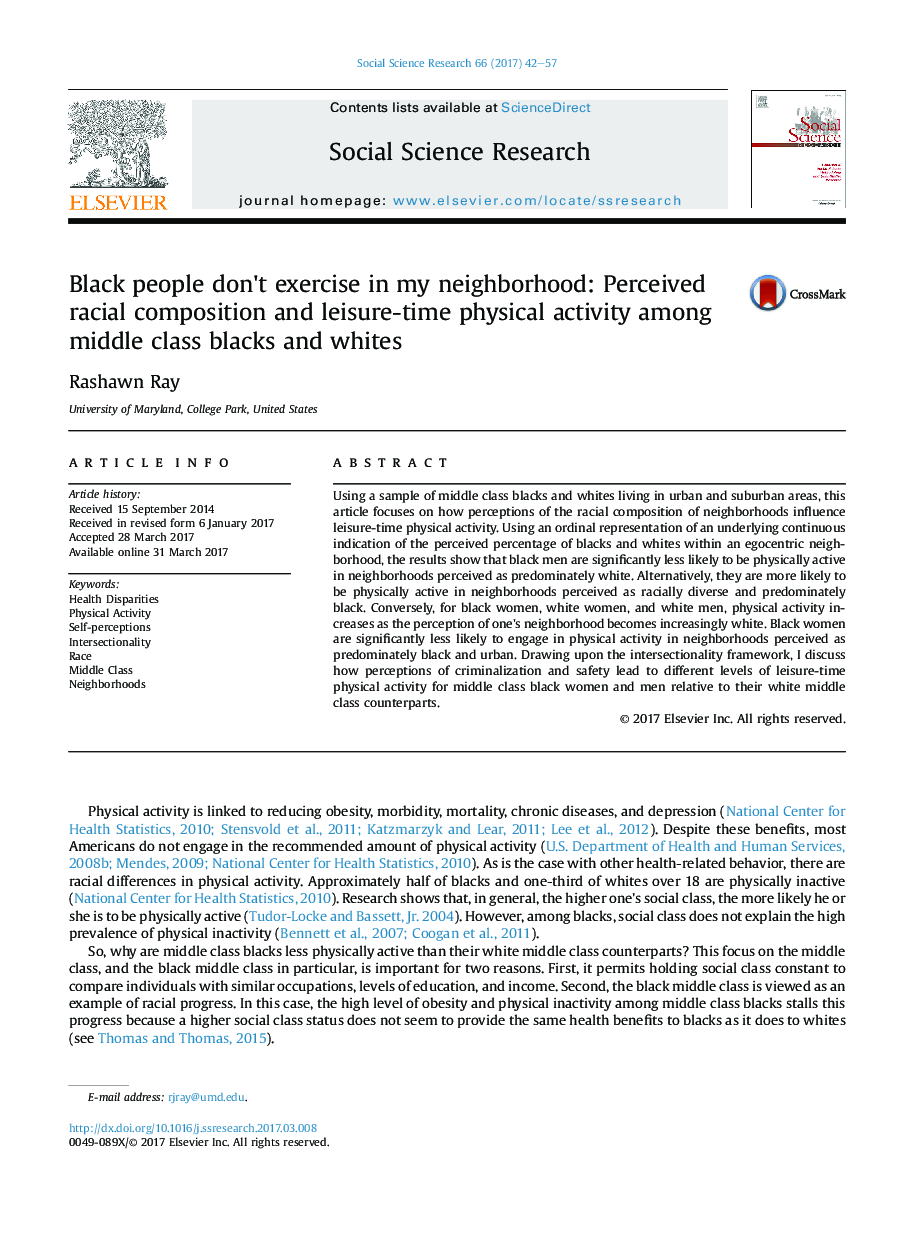| Article ID | Journal | Published Year | Pages | File Type |
|---|---|---|---|---|
| 5047013 | Social Science Research | 2017 | 16 Pages |
â¢The intersectionality framework is important for research on health disparities.â¢This study uses a sample of middle class blacks and whites to examine physical activity.â¢Black men are less physically active in neighborhoods perceived as predominately white.â¢Black women are less physically active in neighborhoods perceived as predominately black and urban.â¢The influences of criminalization and safety on physical activity are discussed.
Using a sample of middle class blacks and whites living in urban and suburban areas, this article focuses on how perceptions of the racial composition of neighborhoods influence leisure-time physical activity. Using an ordinal representation of an underlying continuous indication of the perceived percentage of blacks and whites within an egocentric neighborhood, the results show that black men are significantly less likely to be physically active in neighborhoods perceived as predominately white. Alternatively, they are more likely to be physically active in neighborhoods perceived as racially diverse and predominately black. Conversely, for black women, white women, and white men, physical activity increases as the perception of one's neighborhood becomes increasingly white. Black women are significantly less likely to engage in physical activity in neighborhoods perceived as predominately black and urban. Drawing upon the intersectionality framework, I discuss how perceptions of criminalization and safety lead to different levels of leisure-time physical activity for middle class black women and men relative to their white middle class counterparts.
